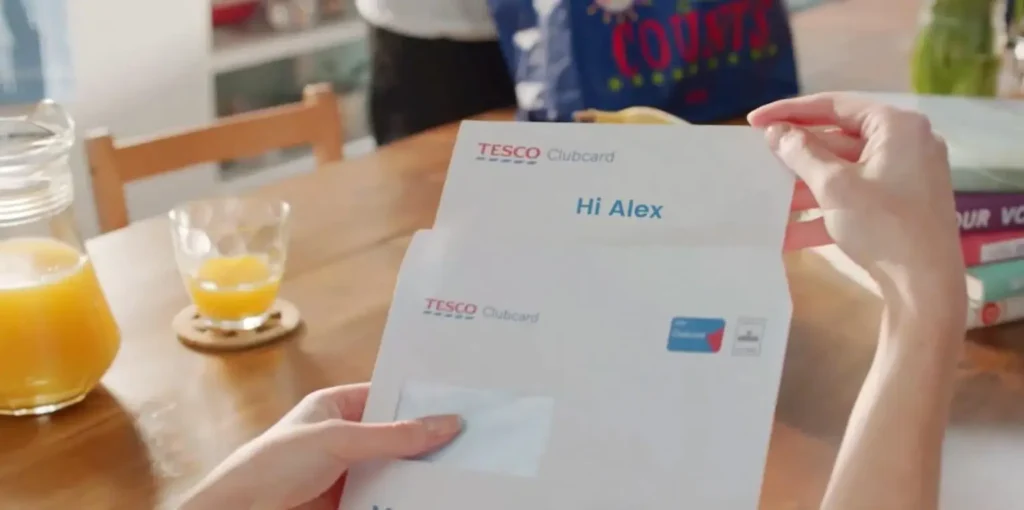Imagine you’re about to contact a company’s customer service. You come to find out the employees are unhelpful and the wait time is long. Would you continue to do business with them?
It’s unlikely. In fact, 1-3 consumers have reported they will leave a brand after one bad experience. The bottom line — a really great, or really poor, experience is often what makes or breaks a customer from coming back.
But while customers increasingly care about the experience they have with a business, brands have yet to meet these demands. Less than half of consumers in the U.S. believe companies provide a positive customer experience today.
How can businesses change this? By incorporating it into every step of their marketing strategy.
Implementing customer experience marketing ensures that your customers are satisfied with their experience at every touchpoint. It’s the marketing strategy you need to attract customers through the digital channels they’re increasingly using to learn about your business — and to retain customers who can easily leave your brand for several other options.
We’ll dig into how customer experience marketing differs from customer service, the value it provides and best practices for implementing this CX strategy.
What Is Customer Experience Marketing?

Most businesses realize CX should be a part of every facet of their business — not just customer service. Why now, though? Isn’t customer service enough?
In today’s rapidly evolving, crowded market, customer experience has become a key differentiator. And a customer’s experience with a business begins long before they come into contact with customer service.
With more opportunities for good customer experiences, as well as poor ones, companies are focusing on creating a more customer-centric approach. To do this, brands need to pay special attention to their marketing and communication efforts, which touch every stage of the customer journey.
So what does this look like?
- Acquisition: Has a potential customer requested information or subscribed to your content? Respond to them in a timely manner and continue to follow up with helpful resources afterwards.
- Onboarding: Your new customers have yet to build a relationship with you — meaning it’s easier for them to walk away if they don’t feel valued. Create an onboarding experience that’s easy, not overwhelming.
- Customer support: Show your customers they can count on you when it matters most. A customer with an issue is already under stress. Customer interactions that leave them feeling frustrated don’t help.
- Retention: Customers are more likely to stay if they know they can trust you — and that trust is built through their overall customer experience.
- Advocacy: Customers who have had a great experience are likely to recommend you to friends, family and followers.
As you can see, customer service is only necessary when your customer has an issue. CX marketing, on the other hand, is leveraged at every touchpoint. It’s being there for your customers before and after they run into issues, making their experience the best it can be whenever possible.
Companies that implement a solid customer experience marketing strategy typically see great results, which we’ll dive into below.
The Value of Customer Experience Marketing
Customer experience has become a buzzword in the world of business. But it’s more than just a popular term — there’s real value behind it.
Plain and simple, customer experience marketing drives better business results across the board. Let’s dig into some of the benefits that come with customer experience marketing.
Drive Customer Loyalty
One of the biggest reasons a business should invest in their customer experience management? It increases the likelihood for loyal customers. According to Gartner, customer experience is responsible for over two-thirds of loyalty, surpassing the impact of both brand and price combined.
This is critical, given the effect brand loyalty has on a business’s bottom line. Just take a look at the numbers.
- A 5% increase in retention increases profit by up to 95%.
- Loyal customers make up 20% of a business’s customer base and drive 80% of revenue.
But while 79% of marketing leaders have customer retention as a priority in their strategy, 61% also believe it to be their top challenge.
To counter this, brands can focus on increasing the positive interactions they have with their consumers, which increases customer satisfaction.
For example, maybe you have a loyalty program, but how much is it being used? Research shows the average customer is active in less than half of the loyalty programs they’re a part of.
Remind your top customers of the value you bring, and don’t be afraid to share a reward just for them, like T.J. Maxx did.
Keeping in touch, in a way that’s fun rather than obtrusive, is a great way to stay top of mind so you can drive loyalty over the long haul.
Bolster Social Proof
Today’s customers are inundated with choices. Whatever they’re searching for, whether it’s a product or service, it’s likely they can find it from several different brands.
To choose a brand from the plethora of options available, customers are turning to Yelp, Google Reviews and other means of social proof or word-of-mouth marketing.
Picture you’re trying out a new restaurant. What would be more impactful — their Instagram featuring perfectly positioned pictures or customer reviews from a site like Yelp, where you can see snaps taken straight from the diner’s phone?
Most consumers would pick the latter. According to statistics, 76% of consumers trust content shared by an individual rather than a brand.
With this in mind, it’s critical you ensure your business is receiving great customer feedback. One way to do this? Avoid customers having a bad experience with your brand.
The experience one customer has with your business is no longer isolated. It’s part of a larger, interconnected web of customers relying on each other’s online reviews and testimonials to make informed decisions. A bad review, citing a poor customer experience, can negatively impact your brand perception — and cause customers to click away.
Build Brand Trust
While a company can invest in creating consistently positive customer interactions, it’s impossible to avoid making mistakes. And when they do happen, you want your customer to trust that you can resolve the situation and prevent it from happening again.
For a consumer to have confidence in your brand, though, it’s critical you make sure they’re happy with their brand experience. A customer that’s already displeased with how they’re treated isn’t likely to see a reason to stay with your company the second things go wrong.
And once you’ve built brand trust, it becomes easier to upsell and cross-sell additional products and services. A customer that knows you want to provide the best experience possible is likely to believe your recommendations are trustworthy — not a quick money grab.
Best Practices for a Great Customer Experience
You now know the value of customer experience marketing. But are you making the most of your social media, your email marketing and the other digital channel your customers are interacting with you on?
Whether you’re already making strides with this increasingly important strategy or you’ve still got a long way to go, you can leverage these best practices to create a superior customer experience your customers will remember.
Collect and Leverage Customer Data
Data is the foundation to your customer experience strategy. You can’t create an experience suited to your customers without understanding your customers’ needs. And the way to do this is through collecting and analyzing customer data.
Here are some metrics that are especially important:
- Net promoter score (NPS): The score your customer gives you in a single-question survey. A high rating shows they like your current business enough to recommend you to a friend, for instance.
- Customer churn rate: The percentage of customers that choose to stop using your product or service.
- Customer lifetime value: A metric that measures the revenue your business will earn over the entirety of a relationship with a customer.
- Average resolution time: The average time it takes to resolve a customer’s issue.
There are a multitude of ways to collect user data. One way is through leveraging user-generated content, an increasingly popular digital marketing strategy for not only creating content consumers trust, but for also gathering powerful customer data.
It’s a win-win situation. Customers want a 2-way conversation with your business. They want to hear back from you after giving feedback. They enjoy interacting on social media. And customer engagement that isn’t just one-sided can help you gain more insight into what it is your customers want.
Contests can be a great way to encourage UGC. Online florist retailer Teleflora took the initiative to include customers in the conversation with this challenge they created for followers to participate in.
$50 #Giveaway Alert! Share a bouquet pic using #teleflora or upload at link below to be entered. Contest ends 6/30. https://t.co/tcJ6nnhziU pic.twitter.com/AHRl9WBR8t
— Teleflora (@Teleflora) June 13, 2017
Not only did it get their product in front of prospective customers, but it also gave them insight into what bouquets were most popular.
Once you’ve collected your data, you can create a data-driven CX for a seamless customer journey. Zurich, a multi-line insurer, did exactly this with the Personalized Video campaign they created below.
By leveraging customer data from their CRM, the company was able to send out a timely reminder for each customer based on when their policy was set to expire. By sending every video out before the customer’s policy expiration, they were able to connect with customers in a way that was relevant, helpful and contextualized.
The upshot? They saw a boost in retention and an increase in tNPS by over 10 points.
Empower Your Customer Service Representatives
As we explained earlier, customer service doesn’t make up all of your CX — but it is a huge factor. The customer service representatives you employ have a huge impact on your customers’ experience, with 46% of consumers reporting they will abandon a brand if they don’t find employees to be knowledgeable.
Slow, inefficient customer service is one of the biggest pain points businesses face. One survey reports that 75% of retailers have lost customers due to issues with waiting time.
You can mitigate this through using the latest technology to supplement your customer service. An automated message can quickly resolve a customer’s questions — even in advance. And it’s especially effective when delivered in a video that’s easy to understand.
This interactive video template was made to help mortgage companies answer their customers’ questions — specifically, those whose forbearance period was set to expire soon. Rather than having to call, this video allows them to self-serve and answer their questions immediately. It’s a resource they can watch at any time, whether they forget something important and need a quick reminder — or want to double-check something specific.
Better still, those with more complex questions can easily get in touch with a customer service representative now that employees have more bandwidth to handle calls. In fact, we’ve seen a 73% increase in call deflection from a mortgage company who leveraged a video similar to the one above.
Personalize Whenever Possible
PwC conducted a study that found 59% of all consumers believe enterprises now lack a human touch in their customer experience.
Without this, brand communications can quickly become impersonal and uninviting. Customers want to communicate through screens, but they don’t want to feel like they’re talking to a screen. And marketers have recognized this, too. Almost 90% of marketers believe their biggest motivation for personalization is to deliver a better customer experience.
While most brands now realize the importance of personalization, where many fall short is that they stop after greeting the customer. Customers are more than aware of the first name field — to impress them, you need to create a completely personalized experience.
One successful example of this is Spotify’s viral “Wrapped” campaign, a completely personalized year in review for each customer.
The music streaming service provides its users with a curated playlist of their top songs, favorite artists, popular genres and more. And users love it. The marketing campaign launched for 2020 amassed over 60 million shares from 90 million users.
And Spotify isn’t the only brand using a personalized year in review to delight their customers. For example, WW (formerly Weight Watchers) sent out a personalized recap video to their members to celebrate the new year and highlight all of the accomplishments they had made thus far.
Recap videos like these are an incredibly popular way to leverage personalization — and can create an experience that makes every customer feel special.
Enhance Your Customer Experience Through Marketing
A good — or bad — customer experience goes far beyond customer service. Digital marketers play a key role in creating positive brand interactions. Whether your customer is entering the onboarding process, reaching out to customer support or interacting with your brand on social media — a customer-centric marketing strategy makes sure your customer has a positive experience at every stage.
With the latest technology, digital marketers can make their brand communications interactive, contextual and customizable. This empowers customers to self-serve on demand and receive relevant answers in real time. Better still, these answers can be put in a video that’s fun to watch to create a digital experience that’s not only informative, but engaging.
Are you ready to go above and beyond your customers’ expectations? Connect with us to start.







